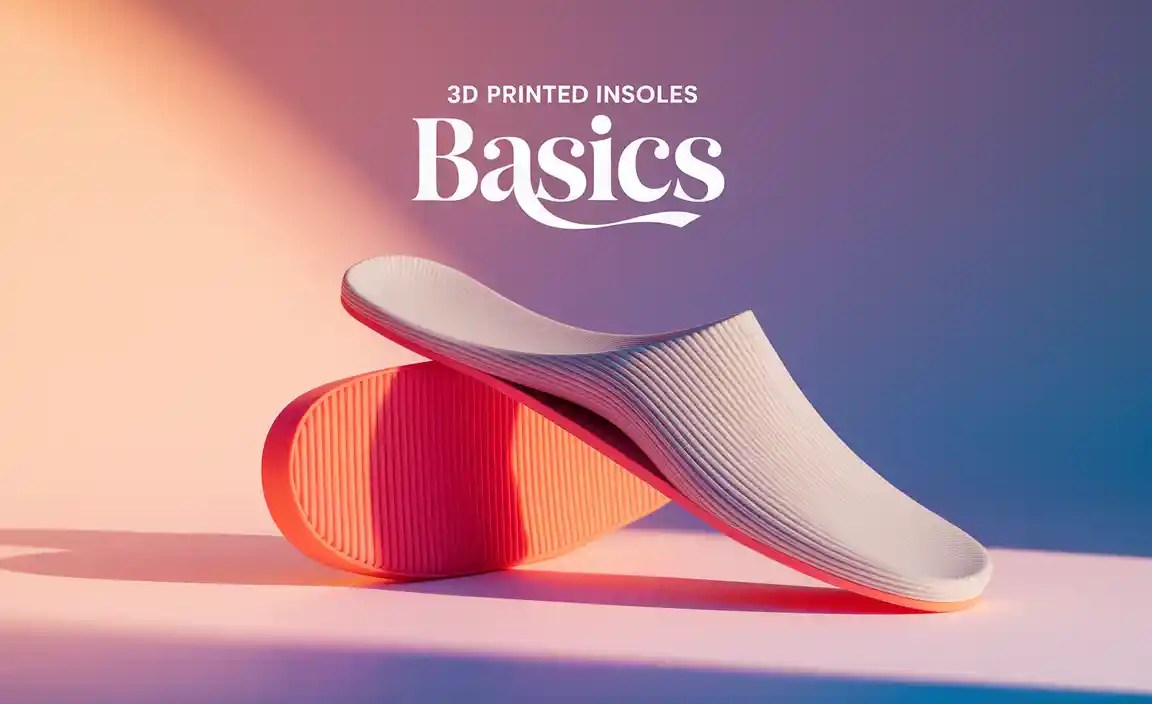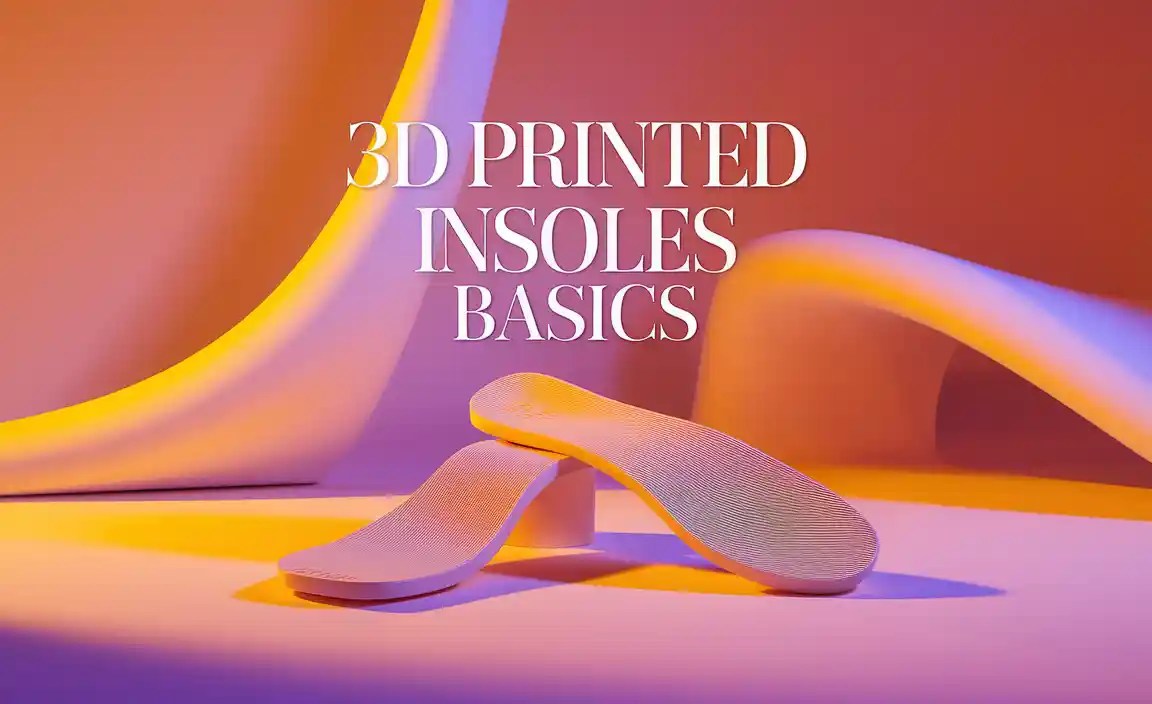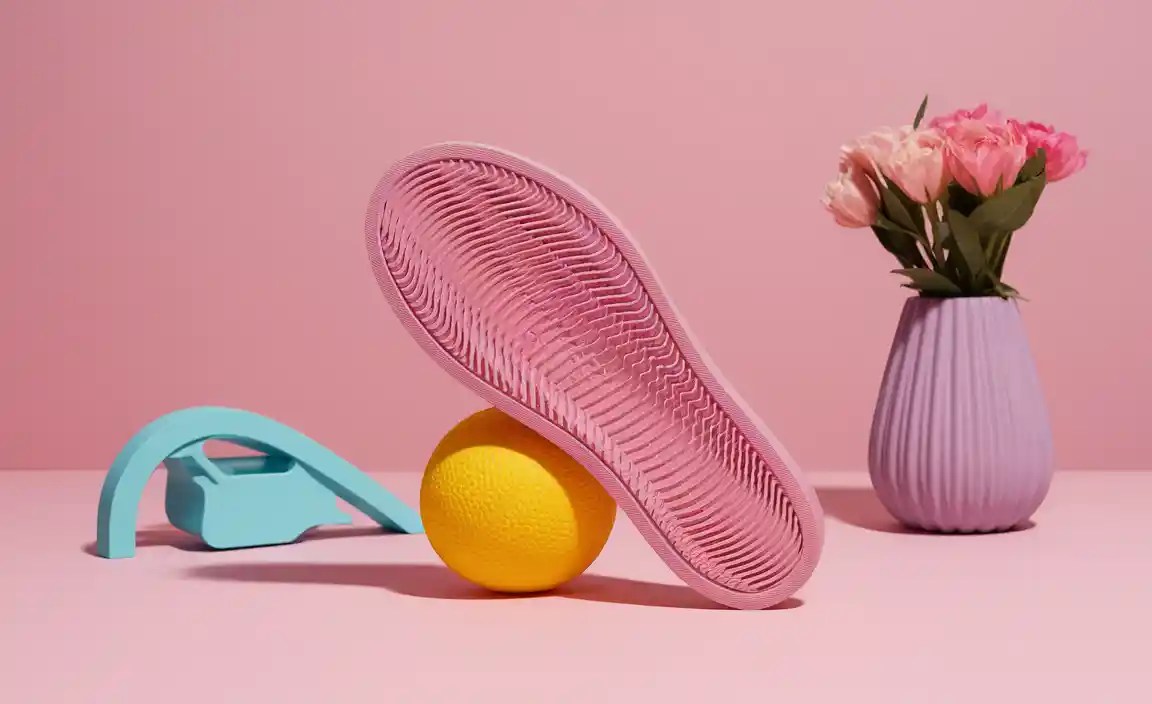Have you ever felt tired after a long day on your feet? Many people do, and it can be hard to find comfort. What if I told you that 3D printed insoles could change everything? These cool, custom-made items fit perfectly into your shoes and help support your feet.
Imagine walking on clouds instead of hard surfaces. 3D printed insoles can provide extra cushion, reduce pain, and even improve your overall balance. They are made using advanced technology that scans your feet and creates a unique design just for you.

Interestingly, did you know these insoles can reduce your risk of injury? Many athletes use them to stay safe and comfortable. Understanding the basics of 3D printed insoles might just inspire you to explore this exciting innovation.
3D Printed Insoles Basics: Understanding Technological Advancements
3D printed insoles are revolutionizing comfort. They use special technology to create personalized fit for your feet. Imagine stepping into shoes that hug your arches just right! They can help with foot pain or support athletes during long runs. Did you know that these insoles often reduce waste compared to traditional ones? This means a friendlier option for our planet. With custom designs, your feet can finally feel great in any shoe!
The Benefits of 3D Printed Insoles
Customization and personalization for individual foot shapes. Enhanced comfort and support compared to traditional insoles.
3D printed insoles offer amazing benefits. They can be made to fit your unique foot shape. This means more comfort and support than regular insoles. You won’t have to worry about sore feet anymore! Here are some key benefits:
- Customization: Perfectly shaped for your feet.
- Comfort: Soft and supportive to reduce pain.
Many people say their feet feel better with these insoles. They help you walk and run easier.

Why are 3D printed insoles better?
3D printed insoles provide a personalized fit and improved comfort, which many traditional insoles can’t match. With these insoles, you can enjoy every step!
Materials Used in 3D Printed Insoles
Common materials used, such as thermoplastic polyurethane (TPU) and others. Pros and cons of different materials regarding durability and comfort.
Insoles are often made from special materials that help them fit well and last long. One common material is thermoplastic polyurethane (TPU). TPU is flexible and strong but can feel stiff. Other materials include EVA foam, which is soft and comfy but might wear out faster. Each material has its perks and downsides.
- TPU: Durable, but can be less comfortable.
- EVA foam: Soft and cozy, but not very sturdy.
- Silicone: Great grip, but heavy.
Choosing the right material is important for comfort and how long the insoles last. Think about what your feet need before buying!
What materials are best for comfort?
Soft materials like EVA and silicone often provide better comfort for daily use. They cushion your feet well, while TPU offers more durability for active lifestyles.
Designing 3D Printed Insoles
The design process: from scanning to modeling. Importance of ergonomics in insole design.
Making 3D printed insoles starts with a simple scan of your foot. This lets designers capture every curve and bump. Next, they use special software to create a detailed model. This helps in making insoles that fit perfectly. Ergonomics play a big role in this design. They ensure the insoles support your feet well, keeping you comfy all day. After all, happy feet make for happy people, right? Who wants their soles to feel like they’re walking on rocks?
| Step | Description |
|---|---|
| 1. Scanning | Capturing foot shape accurately. |
| 2. Modeling | Using software to design the insole. |
| 3. Ergonomics | Ensuring comfort and support for your feet. |
Assessment and Testing of 3D Printed Insoles
Methods for evaluating performance and comfort. Feedback from users and professionals in biomechanics.
Testing 3D printed insoles is important for making sure they feel good and work well. Different methods help check their comfort and performance. For example, users might try them in various shoes, sharing feedback on how they feel. Experts in biomechanics also join the fun! They look at design and support. Here’s a quick table summarizing some evaluation methods:
| Method | Description |
|---|---|
| User Experience | Feedback from wearers about comfort and fit. |
| Pressure Mapping | Tests how weight distributes across the insole. |
| Durability Testing | Checks how the insoles hold up after lots of use. |
By combining user opinions with expert reviews, we can create the perfect step-savior! Remember, happy feet lead to happy people, and that’s a fact!
Choosing the Right 3D Printed Insoles for Your Needs
Factors to consider: foot conditions, activity level, and arch type. How to determine the best insole type for specific footwear.
Picking the right 3D printed insoles can change how you feel on your feet. First, think about your foot conditions, like flat feet or plantar fasciitis. Next, consider your activity level. Are you running or just walking? Lastly, know your arch type. High arches need different support than low arches. Use the right insoles for your shoes. For example, running shoes need more cushioning. Keep these points in mind:
- Foot conditions
- Activity level
- Arch type
How do I know what type of insole to get?
Match the insole type to your shoes for the best fit. Look for features that help your particular foot needs.
The Future of 3D Printed Insoles
Emerging trends and innovations in the industry. Potential impact on the footwear market and personalized healthcare solutions.
The world of 3D printed insoles is buzzing with excitement! New trends are popping up every day. Companies are using fancy tech to create insoles that fit our shoes perfectly. Imagine walking on clouds! These insoles can adapt to your feet and give extra support. This could change how shoes are made forever. It won’t be long before everyone’s wearing personalized insoles that help with health, too. Goodbye, boring shoes!
| Emerging Trends | Potential Impact |
|---|---|
| Custom Fit Technology | Personalized comfort in footwear |
| Sustainable Materials | Greener options for all |
Experts say that this innovation could reshape healthcare by addressing foot problems for many. Get ready, because the future of footwear looks bright and full of fun!

Conclusion
In conclusion, 3D printed insoles are custom-made shoe inserts that improve comfort and support. They fit your unique foot shape, helping reduce pain and fatigue. You can explore local shops or online resources to find options. We encourage you to learn more about how they can benefit your feet for better health and happiness. Happy exploring!
FAQs
What Are The Primary Materials Used In Printing Insoles, And How Do They Affect Comfort And Performance?
Insoles are often made from foam, plastic, and rubber. Foam feels soft and helps cushion your feet. Plastic is used to make the insoles strong and keep their shape. Rubber adds grip so you don’t slip. All of these materials help make your shoes more comfortable and support your feet while you walk or run.
How Does The Customization Process For Printed Insoles Differ From Traditional Insole Manufacturing?
Printed insoles are made using special machines that create them just for you. We can use a 3D scan of your foot to get the perfect shape. This is different from traditional insoles, which are usually made in big sizes and shapes. With printed insoles, you get a unique fit that helps your feet feel better. It’s like having shoes made just for your feet!
What Are The Potential Benefits Of Using Printed Insoles For Athletes Compared To Standard Insoles?
Printed insoles can fit your feet perfectly. This means more comfort when you run or play sports. They can also help reduce pain and keep you active longer. Plus, printed insoles can help with balance and support. You’ll feel stronger and ready for your next game!
How Can Scanning Technology Be Utilized To Create Personalized Insoles For Individuals With Specific Foot Shape Or Orthopedic Needs?
Scanning technology helps us take a picture of your foot’s shape. We use special machines or apps to do this. After we scan your foot, we can design insoles that fit you perfectly. These insoles can help with any foot problems you might have. This way, you can walk comfortably and feel better!
What Are Some Of The Environmental Considerations Associated With The Production Of Printed Insoles?
When we make printed insoles, we need to think about the materials we use. Some materials can harm the environment if they are not recycled. It’s important to use safe, eco-friendly options that don’t pollute. Also, the machines used can use a lot of energy, so we should try to save power. Finally, we must plan how to recycle or throw away the insoles when we no longer need them.
Resource:
-
How Foot Biomechanics Affects Comfort: https://www.ncbi.nlm.nih.gov/pmc/articles/PMC3653179/
-
Sustainable Design Materials in Footwear: https://www.sciencedirect.com/science/article/pii/S0959652621024879
-
TPU and EVA Foam in Modern Applications: https://www.materialstoday.com/polymer-composites/features/tpu-and-eva-foams-performance-properties/
-
3D Scanning Technology Explained Simply: https://www.3dnatives.com/en/what-is-3d-scanning-281020224/
Meet Millard Mar, the deputy manager turned footwear wordsmith at Sole Chronicles. With a passion for shoes and a knack for Insole Basics, Reviews, Foot Health, and Tips, SoleForShoes is your go-to guru for all things underfoot. Step into a world where style meets comfort, and let each post guide you on a journey through the fascinating realm of footwear.

